- Nov 9, 2021
Your Guide to Frog Fishing for Bass
Late fall, when the mats on grass lakes begin breaking up, is prime time call up big bass with a frog. Read on for expert advice on frog fishing from a veteran bass guide.
“You saw where that was, right?” Jimmy Mason asked, as he reeled his frog quickly away from where a bass had just blasted through the milfoil but missed his bait. “Cast right into the blowhole.”
I followed instructions and happily hit the mark because the bass slurped down my frog almost before it landed. I set the hook hard and then reeled steadily to get the fish turned my way before it dug any deeper in the thick stuff. Soon after I was lip landing 3 1/2 pounds of Lake Guntersville largemouth and another pound or two of vegetation. We kept working the same area and caught three more solid frog bass before returning to search mode.
There are few ways to catch bass that are more fun than casting a BOOYAH Pad Crasher across big mats of vegetation and prompting bass to bust through the grass. Anticipation stays high, especially on a lake like Guntersville, where you know that any bass that explodes on your frog could be a legitimate heavyweight.
Prime Time Frog Fishing
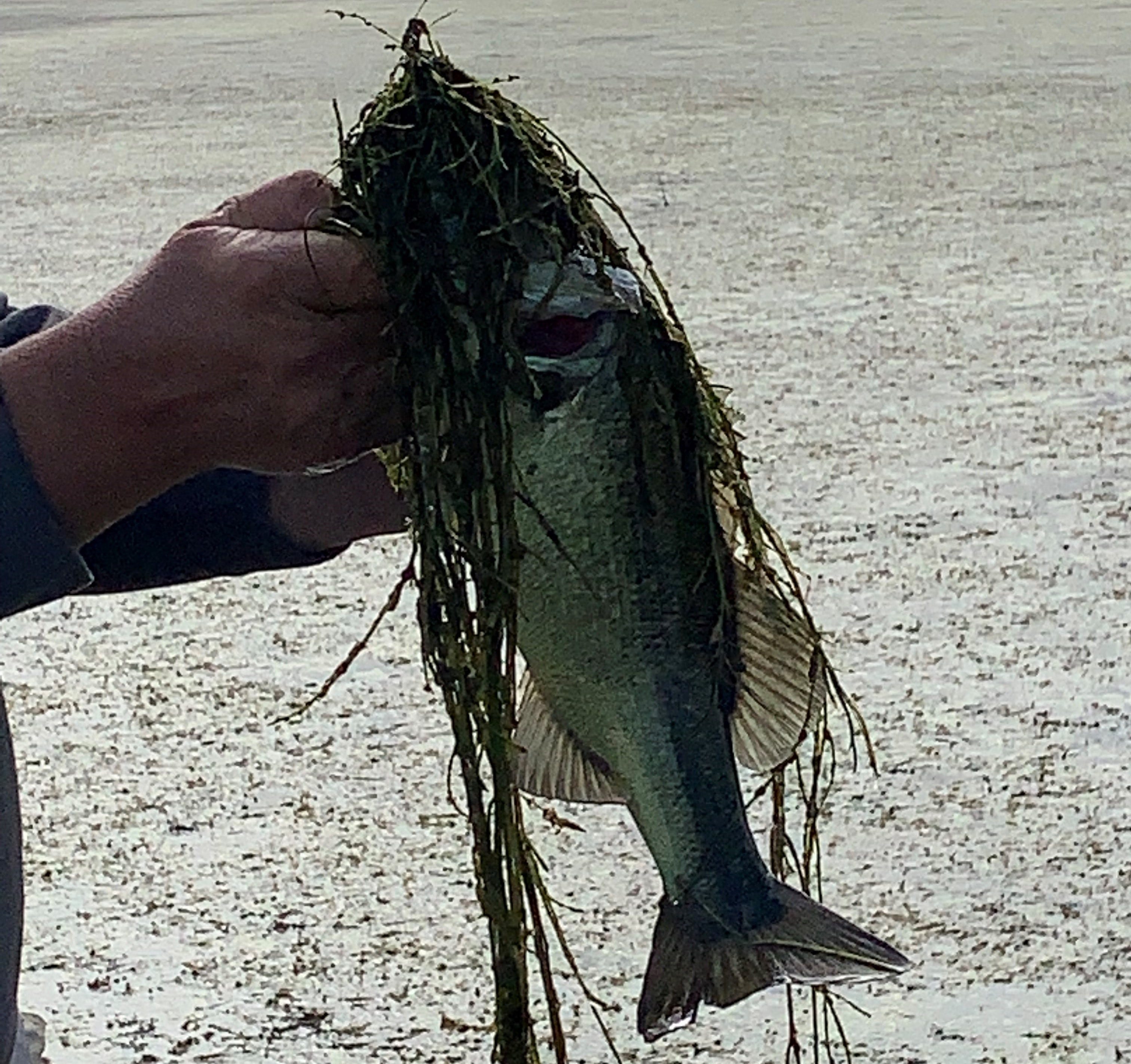

Many people think November is a little late in the year for a topwater approach. In truth, the latter half of autumn delivers some of the best mat fishing of the year on grass lakes throughout the South, according to Mason, a long-time guide on lakes Guntersville, Wheeler, Wilson and Pickwick, and a veteran tournament angler.
On lakes where the hydrilla, milfoil or other vegetation forms surface mats by early summer, the mats get too thick from the bottom to the surface to offer great habitat late in the summer. During autumn, some of the subsurface stems begin breaking up, creating openings, and that’s when the magic happens.
“Caverns of sorts form under those mats, and they offer ideal habitat for feeding bass,” Mason said, explaining that adjacent areas where the stems haven’t started dying form edges, which the fish relate to in the same way they relate to river channel ledges earlier in the summer.
The mats get “cheesy,” as frog fishermen like to say, meaning there’s a yellow/brown lumpy film between the stems, which shows that mats are breaking up beneath the surface.
Mason always keeps a Pad Crasher tied to at least a couple of rods once the mats get right, and he’ll commonly fish a frog all day long.
Pad Crasher Approach
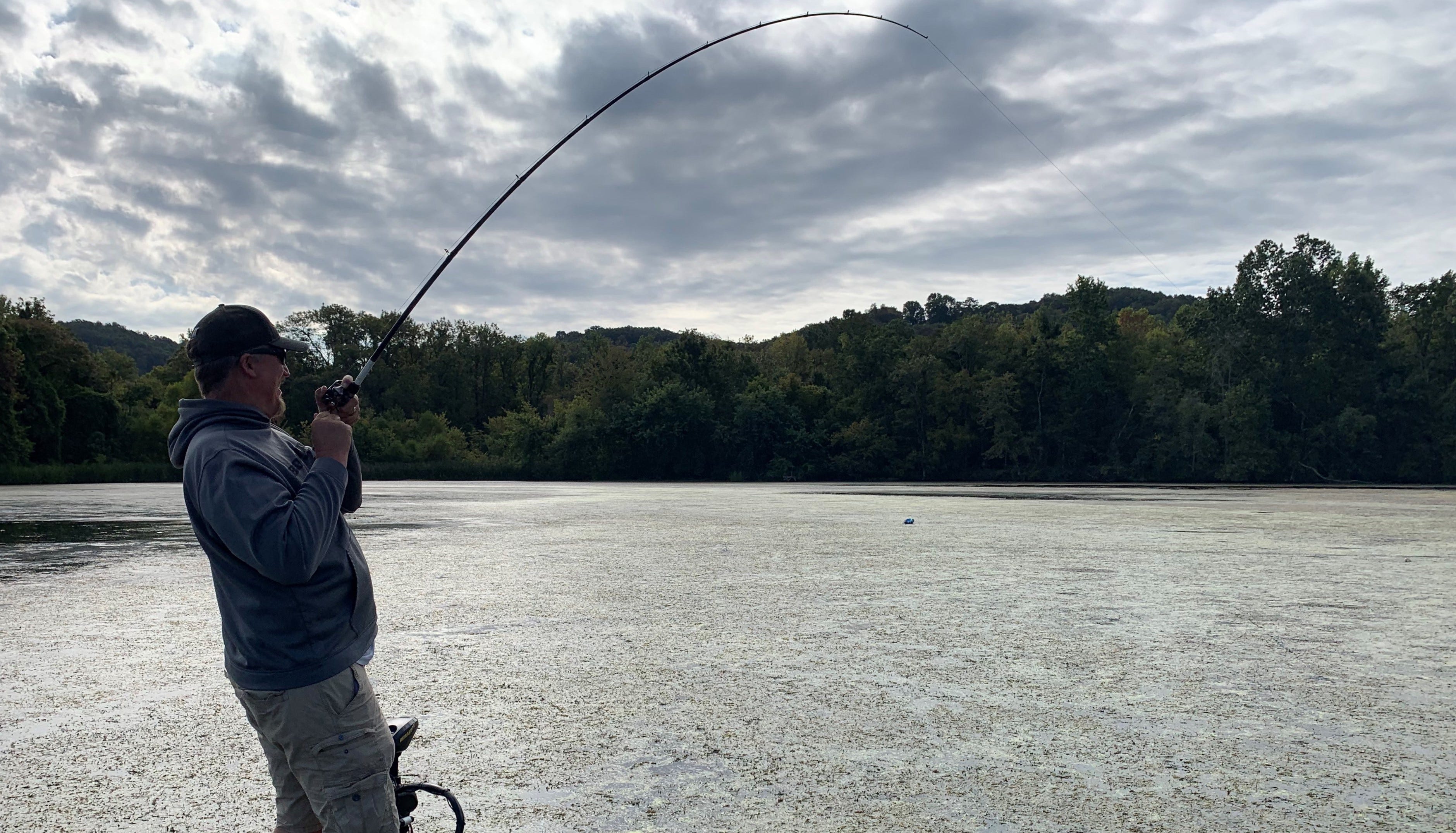

The basic approach to fishing a Pad Crasher over matted vegetation is simple. Rig the frog on heavy baitcasting tackle, ideally on a long rod with plenty of backbone and with braided line; make long casts across mats; and work the bait quickly.
When a bass blows up on your Pad Crasher and gets it, set the hook hard and then keep on cranking to haul the fish out of there. Don’t count on long fights or jumps. Most bass get bogged down in the grass. The thrill is in the strikes and in the size of bass you often drag out!
Simplicity of the overall approach acknowledged, details of your total strategy for finding bass and fishing a Pad Crasher can make a monstrous difference in your success rate.
Mason begins with a searching mentality, moving quickly to find mats that look alive and to locate feeding fish. Bass really tend to congregate under mats during late fall. That means that a lot of good-looking mats don’t have many fish beneath them. However, it also means that where you find bass, you might find a bunch of them and some seriously explosive action.
“When I’m in full search mode, I’m not that worried about catching every fish,” Mason said. “I’m trying to get a few to move and reveal themselves because they are often in big groups.”
When Mason does get bit, or even when fish swell the mats following his frog, he’ll slow way down (slowing the boat, not his retrieves). And when he catches a fish, he’ll repeat the exact cast a time or two and then work the area thoroughly before moving along. Anglers miss many opportunities for excellent action when they move along too quickly after catching a bass from a mat, he noted.
4 Critical Clues for Finding Bass
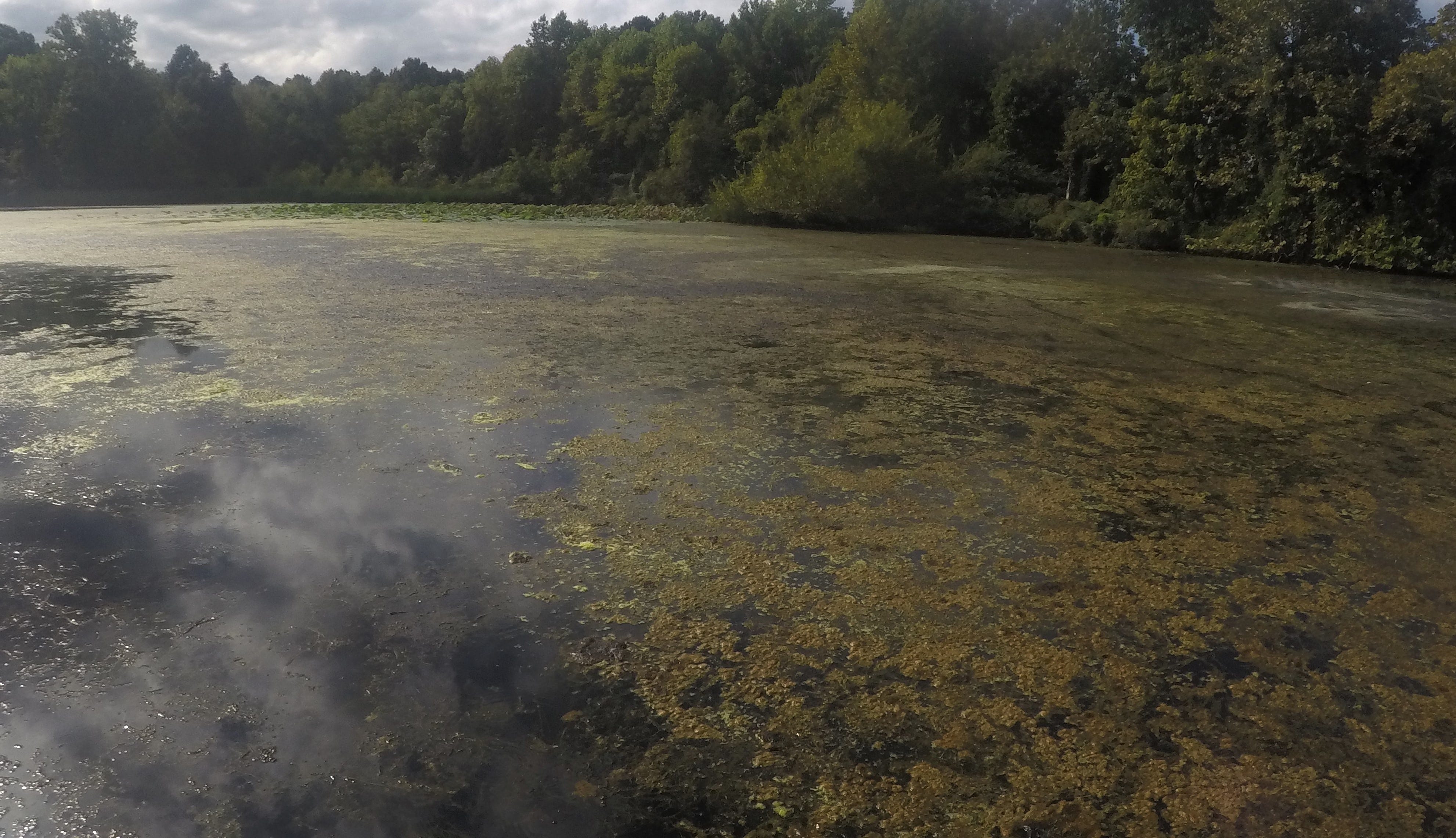

Not all mats or portions of mats are created equal. Look and listen, and pay attention to details, and you’ll recognize the areas that deserve the most attention.
1 - Cheese – Look for the cheesy mats. They have the best ambush positions for bass beneath them.
2- Rice Krispies – Listen for the Snap, Crackle and Pop sounds. Those are bluegills and other smaller fish nabbing insects and a critical link in the food chain for bass.
3- Blowholes & Paths – Note holes where bass have blown up on top and lanes where anglers have dragged bass out of the mat. Good mats hold LOTS of bass, so evidence that a few have been caught from a spot is usually a good thing, not a bad thing.
4 -Irregularities – The best spots in otherwise similar-looking mats are little points and cuts, holes, mixes of different kinds of vegetation, and spots where a log or a big rock combine with the grass to create more complex cover.
Pad Crasher Presentations
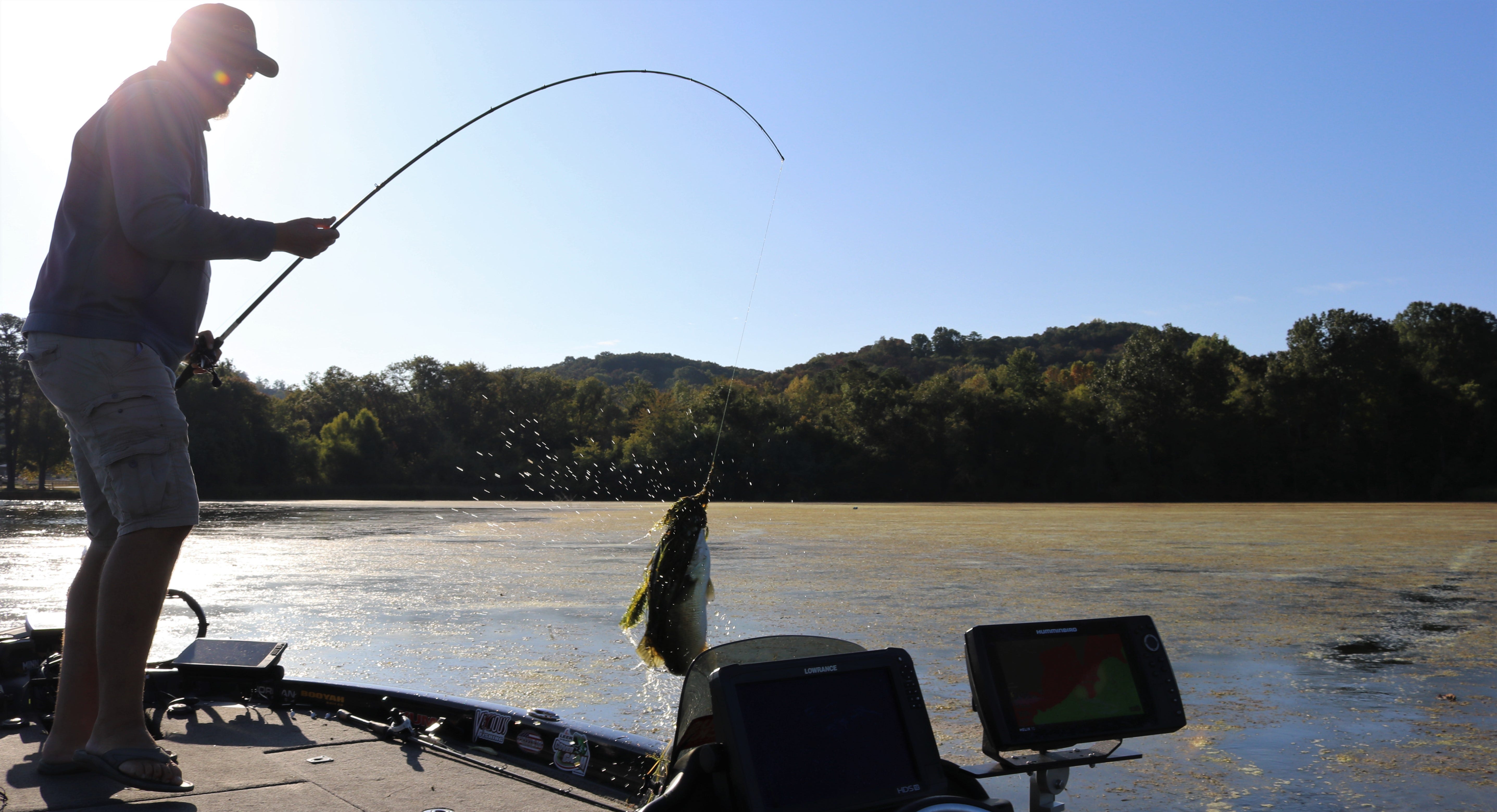

Mason mostly works a Pad Crasher with one of two presentations. Either he reels steadily and fairly quickly so the lure just glides across the mat and the fish must react to keep from missing a meal, or he walks it, like working a Zara Spook. The waking presentation is rapid, with short, quick snaps of the rod tip.
Presentations are only mostly steady, though. Mason will slow the presentation or even pause it strategically, especially around key areas, like a blowhole or a spot where multiple types of vegetation come together. When he pauses a Pad Crasher, a bass often will attack as soon as the lure begins moving again.
Mason studies the mat constantly as he fishes, and while he is working quickly to cover water, casts are rarely random. He’s always contemplating the next cast, considering an angle that crosses a gap in the grass, parallels a point, brings the bait close to a stick-up or rock, etc. He also casts back across key areas after passing them and will work the entire mat from the opposite side, when possible, because working the same spot from a different angle can make all the difference in many cases.
When a bass attacks but does not get the frog, Mason DOES NOT continue working the lure, as is the common strategy with many topwater lures. This pulls bass from their ambush position, where they are most apt to attack. Instead, he reels it back as quickly as possible to get the lure away from the fish and then casts immediately back to the spot. Often bass hit it as soon as it lands.
Frog Selection Guide
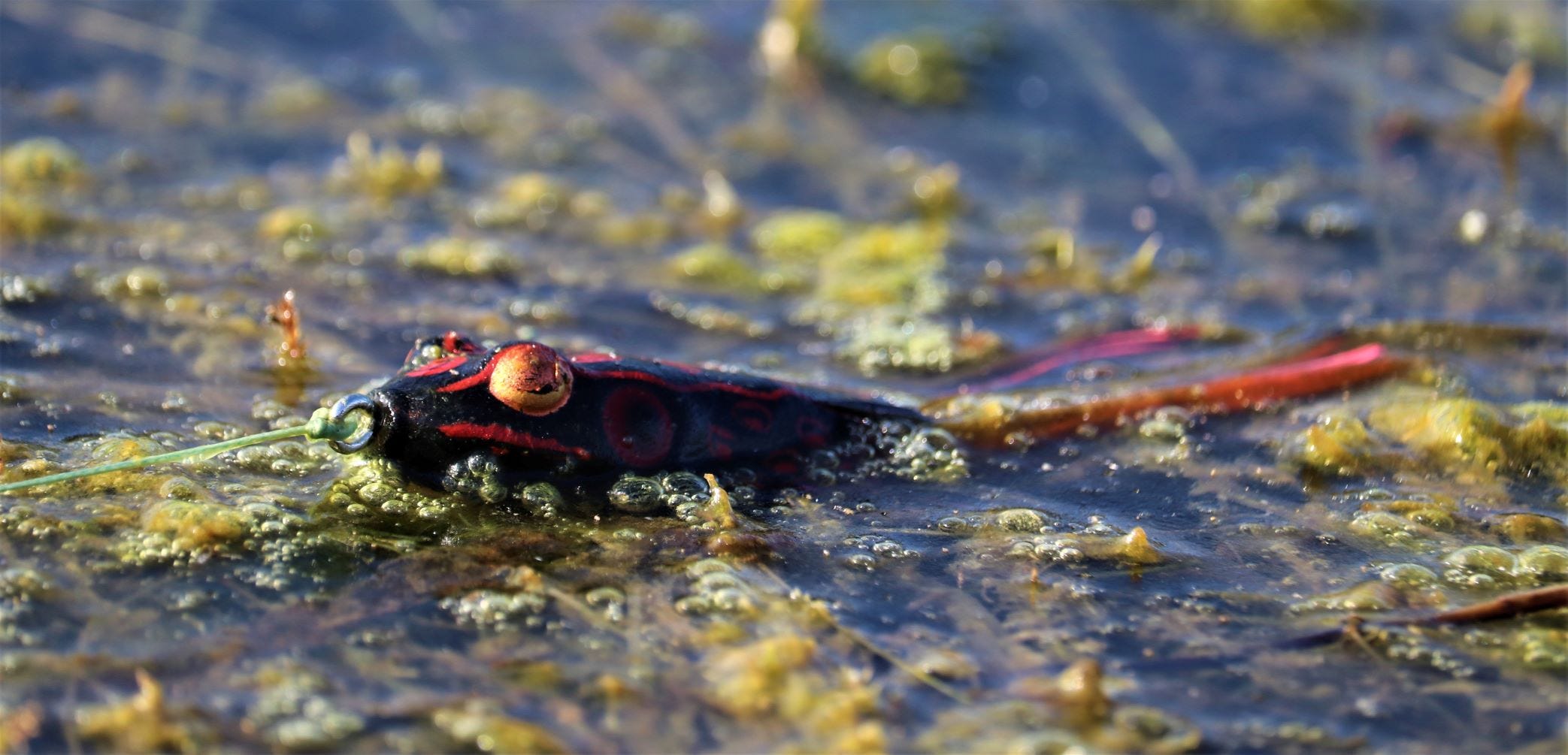

- Pad Crasher – Old faithful and still the go-to for Mason for casting atop mats. It is long-casting and heavy enough to make a big impression as it comes across a mat.
- Pad Crasher Jr – A little more subtle and an easy-looking meal. Excellent for when the mat is alive, but the bite is just a bit off. Extra important on cooler late-fall days.
- Pop’N Pad Crasher – A little extra attracting sound for working broken edges of mats and other spotty vegetation. Great for slowing down and coaxing strikes.
- ToadRunner – Also excellent for working edges and more sparse spots, but with steady plopping sound and action prompts attacks.



